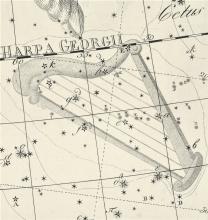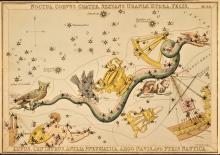Listen to today's episode of StarDate on the web the same day it airs in high-quality streaming audio without any extra ads or announcements. Choose a $8 one-month pass, or listen every day for a year for just $30.
You are here
Ghosts
The astronomers of the 17th, 18th, and 19th centuries just loved to draw constellations — dozens of them. They drew some of them in regions with only faint stars. And they carved off pieces of existing constellations. Some of those creations are still in use today. But many more have been abandoned — the ghosts of constellations past.
A couple of examples sit on the back of Camelopardalis, the giraffe — one of the 17th-century creations that’s still around. One is the reindeer, while the other is the harvest keeper. Both of them were created to honor the science of the day.
French astronomer Pierre Charles Le Monnier created the reindeer in 1736. Le Monnier had been a member of an expedition to Lapland — northern Finland. The expedition was organized to measure Earth’s shape. And it found that our planet isn’t a sphere. Instead, it’s figured a bit like a pear. Le Monnier figured that the reindeer was a good symbol of Lapland, so he chose it to represent the expedition in the stars.
The harvest keeper was created in 1775 by Jerome Lalande, another French astronomer. The new constellation honored Charles Messier — one of the leading “harvesters” of comets. In fact, the constellation was also known simply as Le Messier, especially in France.
Both of these constellations were published in several atlases. Eventually, though, they fell out of use. Today, they’re extinct — the ghosts of constellations that didn’t survive.
Script by Damond Benningfield






